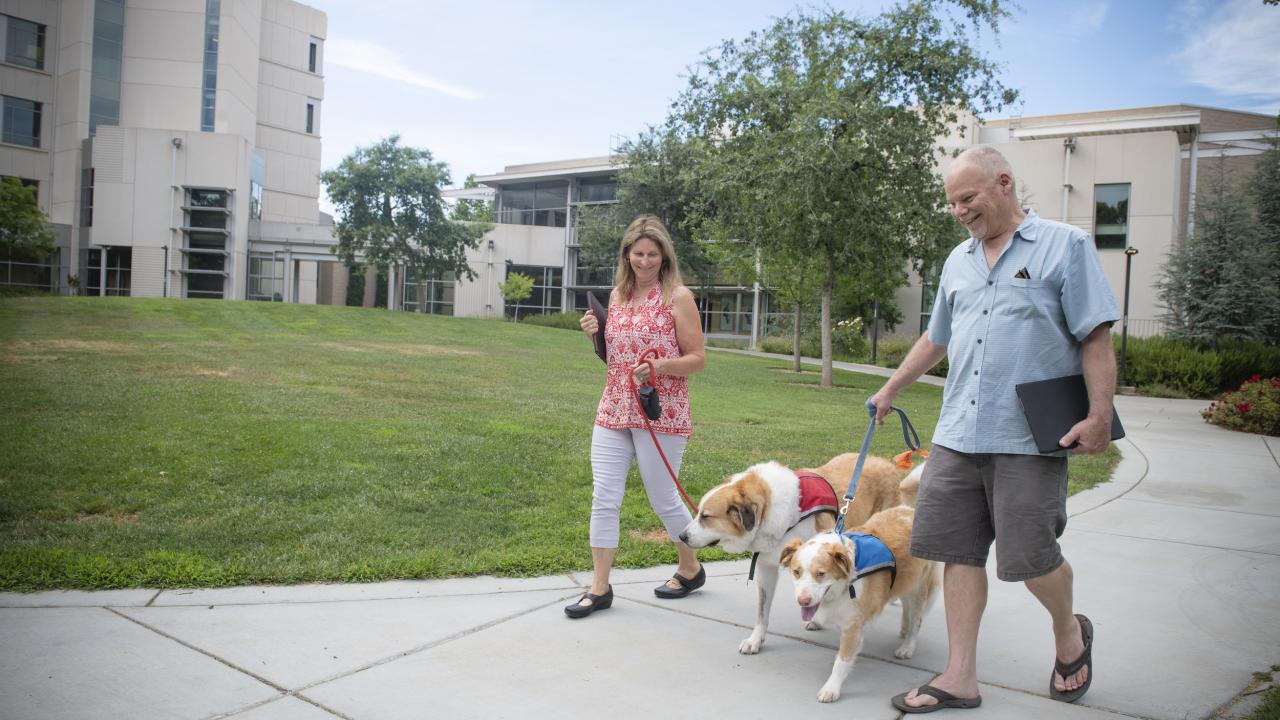
New Approach for Canine Epilepsy
Every evening, Dave Jones and his dog Griffin snuggle on the couch for 30 to 45 minutes to watch a little television. Grif, a 4-year-old whose freckles suggest Brittany spaniel, loves the attention and it gives Jones a chance to recharge the implanted radio device near Grif’s shoulder that records signals from four electrodes deep in his brain.
Grif is enrolled in a pioneering two-year clinical trial with the UC Davis veterinary hospital (through the Veterinary Center for Clinical Trials) and the Mayo Clinic to better understand and treat canine epilepsy. A rescue with unknown medical background, Grif came home with Jones in May 2017 and started having seizures three months later. UC Davis neurologists made the diagnosis and have been caring for Grif ever since. Despite being on medication, he was still suffering seizures every three to four weeks, so his doctors recommended the trial designed to investigate the efficacy of a new device to determine when a dog is likely to have a seizure, allowing researchers to treat pre-emptively.
“While this trial does not guarantee a cure for Griffin, his participation may lead to improved treatment for other dogs and provides researchers with a good model for human epilepsy,” Jones said.
The first part of the trial is to gather information about the electrical signals happening in Grif’s brain that will hopefully indicate when he is likely to suffer a seizure. The radio device attached to the electrodes continuously transmits those signals to a cellphone-sized device that Grif carries in a vest. This device transmits the information to a tablet and from there, the data go to Mayo researchers who aim to develop an algorithm indicating when Grif will have seizures.
With that information, in the second part of the trial, the researchers hope to send signals from Mayo to Grif’s brain when a seizure appears imminent to stimulate his brain and perhaps stop the seizure from happening. For all of this to work, Griff has to be kept within range of his tablet and Jones has to ensure that all devices are charged, including the one under Grif’s skin (the charge comes through a wand that he holds over the device nightly).
Oberon is another dog enrolled in the trial and is already in the second stage of the trial where he receives stimulus through the electrodes when his brain indicates that a seizure is imminent. While the clinical trial is ongoing and results have not yet been statistically analyzed, his owner, Dr. Liz Stelow, reports a decrease in seizures and improved quality of life.
“If this clinical trial proves successful, it will revolutionize treatment for people with epilepsy,” said Dr. Beverly Sturges, the UC Davis neurologist who serves as prime investigator for the veterinary trial. “But we couldn’t do this project if we didn’t believe it was helping these dogs along the way.”
The Mayo Clinic is treating humans in a similar manner, and collaborating with UC Davis on the canine side offers translational research to benefit both species.
“The hope is that, through control of seizures, we can get people and dogs off their anti-seizure meds and thus allow them to get back to some semblance of their normal lives — in Griffin’s case, running and jumping again without the side effects of daily doses of phenobarbital,” Jones said. “That’s my wish for him and other dogs, and people, too.”
Owners interested in more information can contact Chelsea Crowe, cmcrowe@ucdavis.edu or (530) 752-7267.
